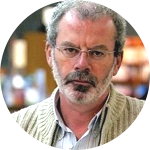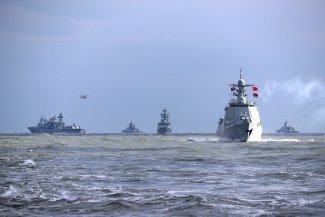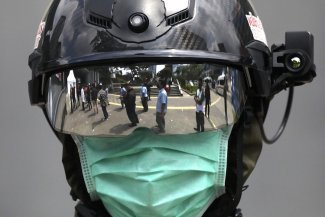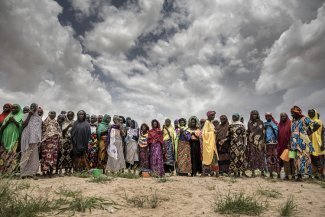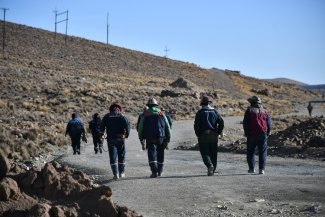“A quick look at the United Nations, under-resourced and limited in its ability to hold states to their jointly made commitments, leaves us with no doubt as to the current lack of will among its members to use the organisation’s full potential in the service of peace,” says security analyst Jesús A. Núñez Villaverde. In this image, the UN headquarters in New York.
Fuelled by the impact of the war in Ukraine and the growing tensions in the Indo-Pacific (currently the centre of gravity of the international agenda, being the region where the strategic competition between the United States and China is most visible), global military spending has continued to rise for the eighth year in a row. The data recently published by the Stockholm International Peace Research Institute (SIPRI) confirms that an all-time record of US$2.24 trillion was reached in 2022, which represents a 3.7 per cent increase in real terms (6.5 per cent in nominal terms) on the previous year.
Seen from a traditional state security perspective – which generally assumes that more weapons means more security – this could be interpreted as good news, as it implies that having more resources to protect one’s own interests and a greater power of deterrence against potential enemies. But immediately, when looking at the data on the number of state conflicts registered so far in the 21st century, based on data from Uppsala University’s renowned conflict programme, we see that while in 2001 there were 33 active conflicts in various parts of the world, 20 years later the number had risen to 54. And while recognising that violence is a complex phenomenon, it seems elementary to conclude that, viewed on both a global and a local scale, the idea that more weapons means more security does not hold true.
One-dimensional militaristic vision
Yet the vast majority of the world’s countries continue to cling to this state security approach, determined to place the interests of the state above those who live in it, disregarding the fact that the state apparatus all too often ends up in the hands of a small elite that is essentially committed to defending its privileges, regardless of (if not contrary to) the needs and demands of the people. In the same vein, the majority also continue to narrow the concept of security to its strictly military dimension, as if the social, political and economic dimensions were not just as crucial to achieving a more secure world.
This one-dimensional militaristic vision largely dominates the international stage, with the United States in the lead once again in 2022, accounting for 39 per cent of global defence spending (US$877 billion), followed by China with 13 per cent (US$292 billion). This means that what these two powers devote to military defence is equivalent to 52 per cent of the world’s expenditure in this field. If we add Russia (US$86.4 billion), India (US$81.4 billion), Saudi Arabia (US$73 billion) and Japan (US$46 billion), the share of the total rises to 64 per cent. As for Europe, the sum of the budgets of all the countries in the Old Continent reached US$345 billion that year, an increase of 13 per cent on 2021, with a cumulative increase of 30 per cent in their defence budgets since 2013. And among all of these countries, Ukraine has seen the biggest year-on-year increase, up 640 per cent to US$44 billion, amounting to 34 per cent of its GDP.
Everything points to a further increase in global military spending this year, as if we were unwilling to understand that the vast majority of violent episodes, whether inter-state or intra-state, are fundamentally driven by social, political and economic factors and double standards at international level.
Maintaining such a pattern of behaviour ultimately means persisting in the erroneous belief that military resources are capable of solving problems for which they are neither equipped nor trained.
It also means insisting on a reactive approach, which is only mobilised in response to an outbreak of violence, neglecting the peacebuilding and conflict prevention mechanisms that are specifically designed to prevent such an outbreak from happening.
Peacebuilding and conflict resolution
The decision to go down this second route remains pending. A quick look at the United Nations, under-resourced and limited in its ability to hold states to their jointly made commitments, leaves us with no doubt as to the current lack of will among its members to use the organisation’s full potential in the service of peace. It is the UN, as the legitimate representative of the international community, that is best placed to lead an exercise that must combine a sustained effort over the long term (there are no shortcuts or miracle solutions), multilateralism (no single state has sufficient means to deal with the risks and threats affecting us) and multidimensionality (combining social, political, economic, diplomatic and military elements). This is the only way it can go beyond merely managing problems and aspire to solving them by addressing the structural causes before the situation inevitably spirals into violent conflict.
In the same vein – and without in any way relinquishing the defence of each state’s legitimate interests and the need for military resources as an instrument of last resort to protect them – the need to broaden the perspective to include human security is also essential. The concept of human security emerged in the middle of the last decade of the last century but was never consolidated as a key reference point for state security models, caught in the throes of the ‘Global War on Terrorism’ that has dominated the last two decades.
This approach is not intended to unseat state security but, rather, to broaden it in a way that makes it clear that social peace and wellbeing in the country itself are just as important as the defence of its borders and territories from potential external threats.
Human security places the human being at the centre, considering that the main foundation of peace and security rests on satisfying the basic needs of all persons, on enabling them to fully exercise their social, cultural, political and economic rights, and to be governed by legitimate authorities. And, accordingly, it includes economic, nutritional, health, environmental, personal, community and political dimensions.
It implies, in essence, accepting that our own security cannot be achieved at the expense of our neighbour’s security, and that, as the former UN Secretary-General Kofi Annan pointed out in 2005, there can be no security without development, there can be no development without security and there can be neither development nor security without full respect for human rights for all. Part of the same approach are the Sustainable Development Goals, the 2030 Agenda and the document Our Common Agenda, presented by the current UN Secretary-General António Guterres in 2021, awaiting the outcome of the Future Summit convened by the UN for September next year.
Colombia has just published its new 2022-2026 Security, Defence and Citizen Coexistence Policy, Guarantees for Life and Peace, based directly on the premise of protecting the lives of all its citizens. Will it succeed in implementing it? And will anyone be inspired to follow its lead at a time when everything seems to suggest that military budgets will continue to increase in the short term?



